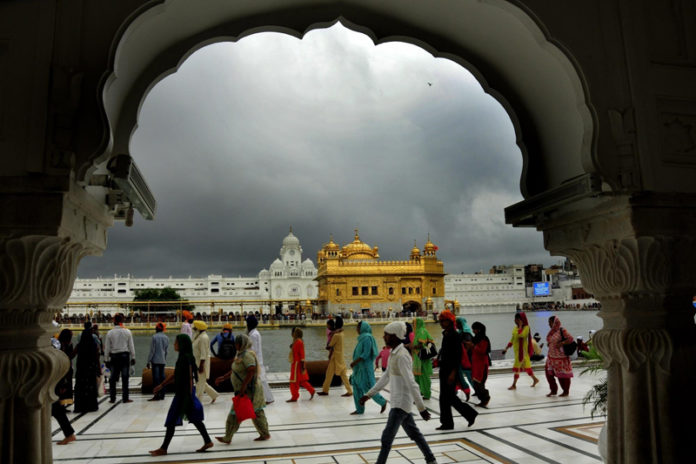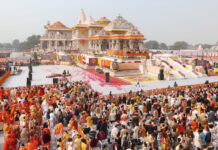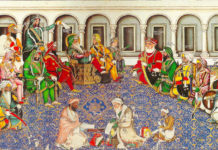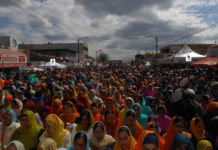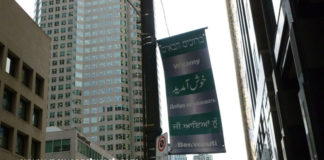Canadian Sikh Jagpal Singh Tiwana argues that as a dynamic religion, Sikhism must keep up with the changing times and have a fresh look at Sikh Rehat Maryada
HALIFAX (Canada): The Sikh Rehat Maryada or Sikh code needs a second look. It may seem like a heavily loaded statement, but let us have a look at some of the reasons for it.
First of all, historians have not found any Sikh Rehat Maryada written by Guru Gobind Singh himself. After his death, many attempts were made in the 18th century to develop a maryada, but most drafts turned to be contradictory and inconsistent with the teaching of Sikh Gurus.
The Shiromani Gurdwara Parbhandhak Committee (SGPC) started a formal process to create a maryada in 1927 at the suggestion of Akal Takht Jathedar Teja Singh Akarpuri. Actual work started in 1931 when a committee was appointed with Prof Teja Singh as its convener. Members widely differed on its clauses, often leading to arguments, protests and even walk-outs. Some meetings were poorly attended. Fourteen years later, however, a compromise was achieved on a final draft.
This maryada was created by Amritdhari Sikhs to reflect the Khalsa spirit.
However, seven decades later, we live in a new world and a new reality where about 85% of Sikhs are not Amritdhari. That’s why the Sikh Rehat Maryada needs a fresh look. It needs to be retouched in the Sikh spirit to provide guidance to the whole Panth.
Economic, political and cultural circumstances keep changing from generation to generation and so do the Constitutions of nations. The Indian constitution has been amended more than 100 times in the last 65 years. Dynamic religious communities also show similar processes in their faith as well.
In fact, I would argue that each generation should look critically and sincerely at their old and out-of-date rituals, ceremonies, conventions and traditions to keep their religion attractive to the younger generation.
Now let us have a look at a few of the articles of the Sikh Rehat Maryada which Sikhs now may find deserving of a second look. I suggest that they need to be re-examined, edited, reworded, revised or even omitted.
Article 4:
(1). A Sikh should wake up in the ambrosial hours (three hours before dawn) and take bath…
(2). He should recite the following scriptural compositions every day: (a)Japu, Jaapu, Ten sawayyas, sodar Rehras, Benti Chaupai, Dohra, Anand Sahib, Madhawani, with Sohila – to be recited at bedtime. And Ardas in the morning and at the end in the evening.
This is actually meant for the Amritdhari Sikhs. Why do I say that? Because we find that the same are repeated in the Amrit Chhakna or baptism ceremony (Article 24j)
I wonder if all baptized Sikhs have the time to follow so many rituals when they are shift workers, especially in western countries.
Yogi Bhajan’s Sikhs, however, follow such a regimen more or less. We should admire their devotion and commitment, but be very careful when making it a requirement for every Sikh.
Article 5:
“(b). The Guru Granth should be opened in the gurdwara every day without fail.”
But in the Sikh diaspora, some, if not most, gurdwaras open once a week, only on Sundays, particularly when towns have small population of Sikhs. I know of several such gurdwaras in Canada and the US.
“(n). You may not sit on chair or stool in presence of the Guru Granth …”
I think disabled people should be allowed to sit on chairs. They need gurdwaras more than others. Some gurdwaras have now introduced chairs for the old people both in diwan (gurdwara) hall and langar hall.
“(q). Only Amritdhari Sikhs can enter the hallowed enclosures of takhts… ”
Guru Gobind Singh did meet non-Amritdhari Sikhs and non-Sikhs in his life. The enclosures of takhts are not more sacred than the tenth Guru.
“(q). …Ardas for and on behalf of any Sikh or non-Sikh except a patit or punished (tankhaya) can be offered at the takhts…”
Awarding punishment (tankhah) is a medieval practice. Ours is a progressive religion. Any Sikh guilty of violating a “must” clause of the Sikh Rehat Maryada should be summoned to the Akal Takht to be advised and persuaded against his wrong act.
“(s). There should be drum (nagara) in the gurdwara for beating on appropriate occasions.”
Our non-Sikh neighbors will not appreciate the noise. Some gurdwaras in the western world do not have nagaras any more.
Article 6:
“(a). only a Sikh may perform a Kirtan in a congregation.”
…
This means the descendants of Bhai Mardana and Sindhi Sikhs are not allowed. A Muslim girl, Tasleema, performs Kirtan in a Srinagar Gurdwara, she also did it once at Darbar Sahib, Amritsar.
Article 16:
(k). Piercing nose or ears for wearing ornaments is forbidden for Sikh men and women…
….
Most of the Sikh women do it . They are fond of ornaments.
(t)…A Sikh must wear a kachhahera and turban…
…
Sikh sportsmen (swimmers, wrestlers and boxers) should be exempted. The kachhahera should be replaced by underwear for non-baptized Sikhs.
Article 18:
(b). A Sikh’s daughter must be married to a Sikh.
…
If she does not marry a Sikh, no action is suggested. This provision only covers daughters, what about the son marrying a non-Sikh girl.
(k). Person professing faiths other than the Sikh faith cannot be joined in a wedlock by the Anand Karaj ceremony.
…
This clause has disturbed many wedding ceremonies in the UK recently.
(q). A baptized Sikh ought to get his wife baptized.
…
If he does not, then what? No action is prescribed.
Article 24:
Taboos for baptized Sikhs or Amritdharis
(1) Dishonoring the hair.
…
How do we that ? It is not explained. Some Sikhs wear a woolen head cover in winter or a baseball cap in summer in place of turban. Is it a dishonor?
(4). “…You must not associate with a Sikh who had uncut hair earlier, but has cut it or a Sikh who smokes…”
…
On the other hand, we see that often Amritdhari Sikhs associate with the patits. They attend their functions, perform akhand paths and wedding ceremonies etc., for them. Patits, if holding a high office, are often given siropas (robe of honour) in gurdwaras.
US Congressman Dalip Singh Saund; Ujjal Dosanjh, Premier of British Columbia, Canada; and Canadian Federal Minister Herb Dhaliwal were given siropas when they visited the Golden Temple. Herb Dhaliwal also brought Canadian PM Jean Chritien to Darbar Sahib and presented a karra (bracelet) to Chretien and joked, “Now we can call you Jean Singh Chretien.”
When Akal Takht Jathedar Joginder Singh Vedanti visited Canada, he was interviewed by Joginder Singh Bassi, host of TV program `Gaunda Punjab’. Joginder Singh Bassi is a non-turbaned Sikh. Vedanti ji did not decline the interview. However on a similar situation Yogi Bhajan did follow the Sikh Rehat Maryada when he refused to take siropa from a Sikh leader in Toronto’s Pape Gurdwara in 1973, because the Sikh leader had trimmed his beard.
(q). Following individuals shall be liable to chastisement involving automatic boycott:
1. ..Any one maintaining relations or communion with followers of Dhir Mal…
.
Many Sikh scholars approach Sodhis of Kartarpur, descendants of Dhir Mal, to examine the Kartarpur Bir (holy book). And Sodhis put the Bir on display occasionally and collect offerings from simple Sikhs.
(3). Boycott the one who dyes his beard.
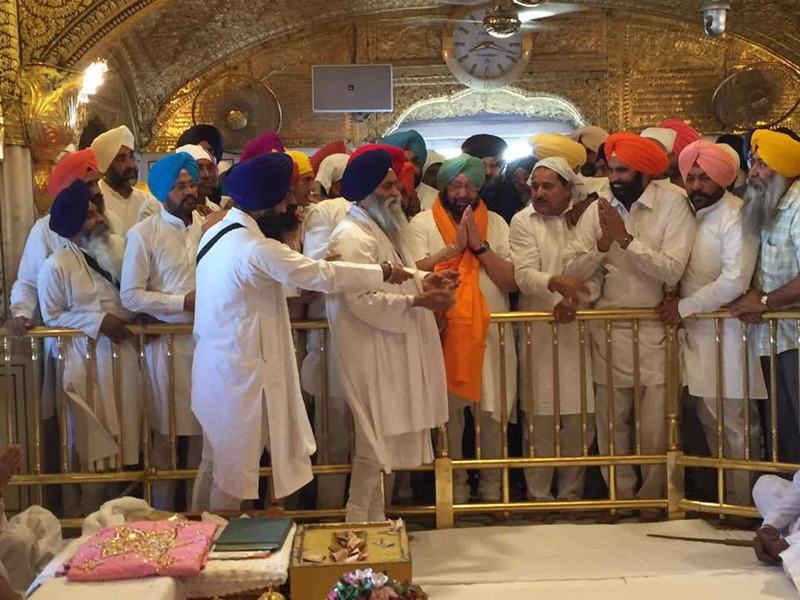
Punjab chief minister Amarinder Singh and union minister Balwant Singh Ramoowalia were denied siropa when they visited the Golden Temple because they dye their beards, but SGPC junior vice-president Kewal Singh Badal also coloured his beard.
Giani Zail Singh, Buta Singh, Avtar Singh Hit, president of the Delhi Gurdwara Management Committee, who dyed their beards, were honoured with siropas from time to time.
This clause says nothing for women if they dye their hair. Similarly, there is no guidance for women to drive scooters with or without helmets.
In many of the above examples, we see a widely inconsistent understanding of the clauses of the maryada.
There are two issues here: the clauses of the Sikh Rehat Maryada and their arbitrary application.
WHAT TENTH GURU SAID
But the maryada should reflect the spirit of our scriptures and the belief of the tenth Sikh Guru who said: `Manas ki jaat sabhai ekai pehchanbo’. The Sikh religion must march with the times to keep its universal appeal.
There is an amendment provision in all the Constitutions of the world. Only the scriptures cannot be changed, but man-made rules can be suitably amended.
A committee needs to be formed to have a fresh look at the Sikh Mehat Maryada. It must include legal luminaries such as Dr. Kashmir Singh, former professor and head of department of law at GNDU; widely travelled Sikh scholars such as Dr. Balkar Singh, former head of Sri Guru Granth Studies at Punjabi University; Tarlochan Singh, former chairman of the Minority Commission; Guruka Singh Khalsa to represent white Sikhs; Dr.I J Singh from abroad; Dr. Gurinder Singh Mann to represent Chairs of Sikh studies; S. Saran Singh of The Sikh Review to represent Sikh magazines; S.Ishwinder Singh and Prof. Nirmal Singh Singh to represent internet discussion groups and Nikki Guninder Kaur Singh and Kiranjot Kaur to represent women. (These are the personal views of the writer)

